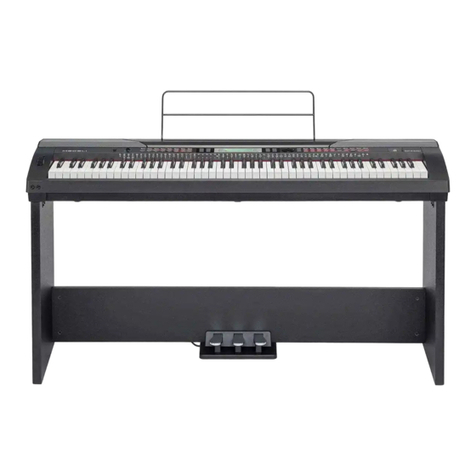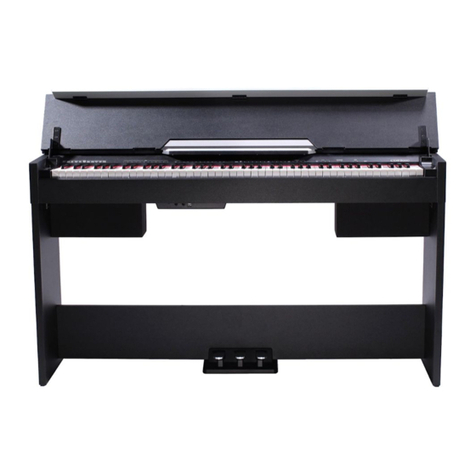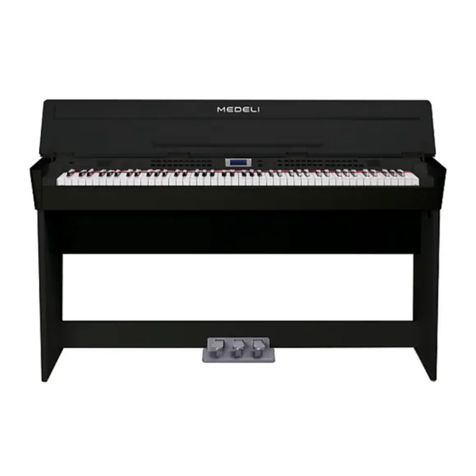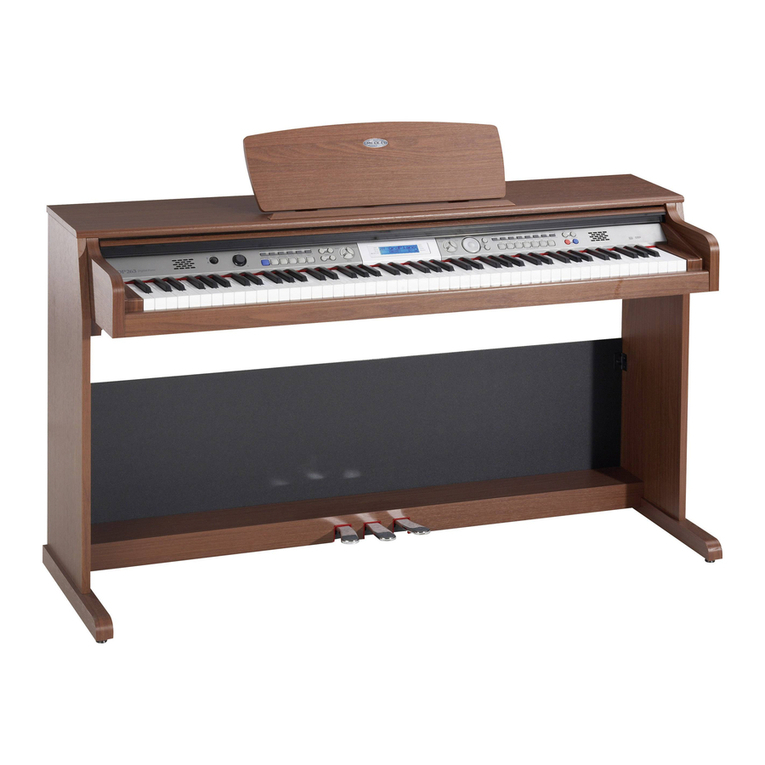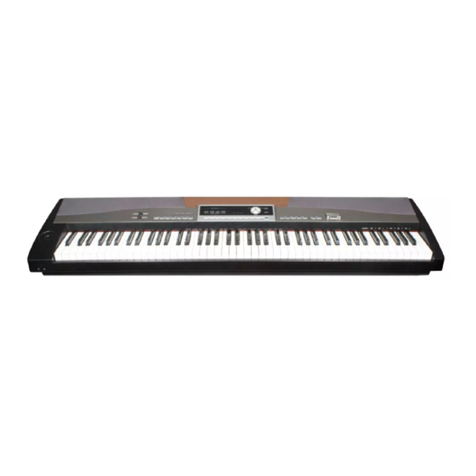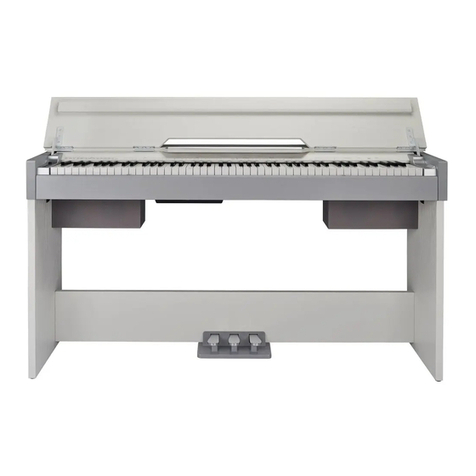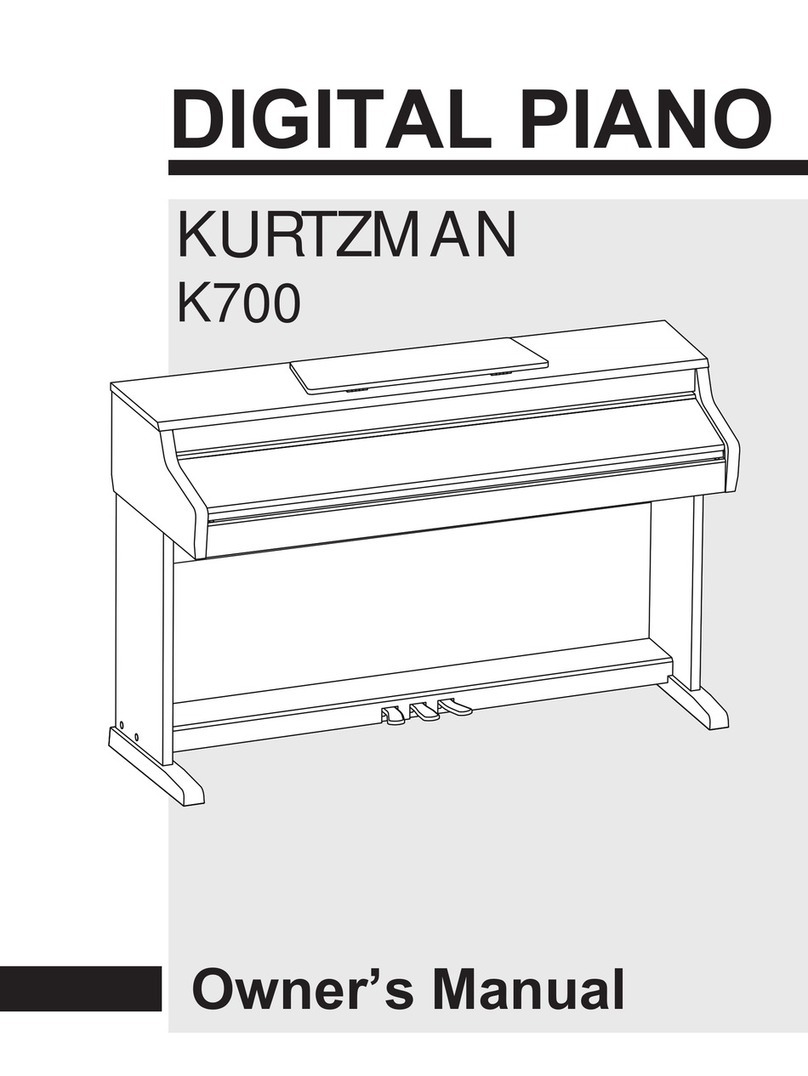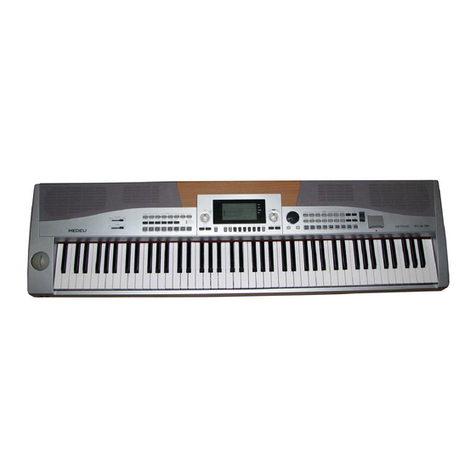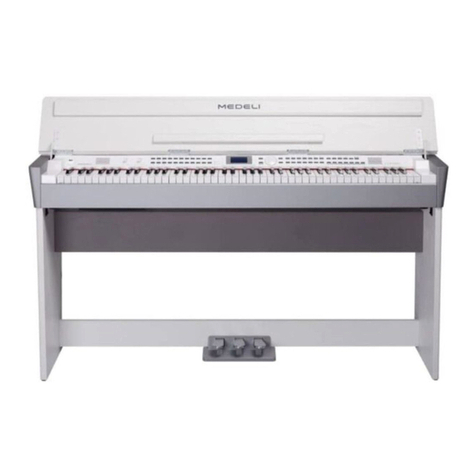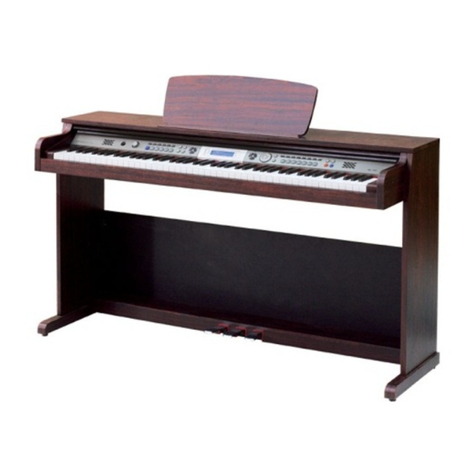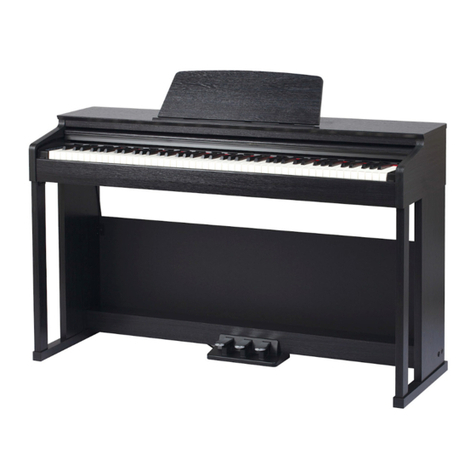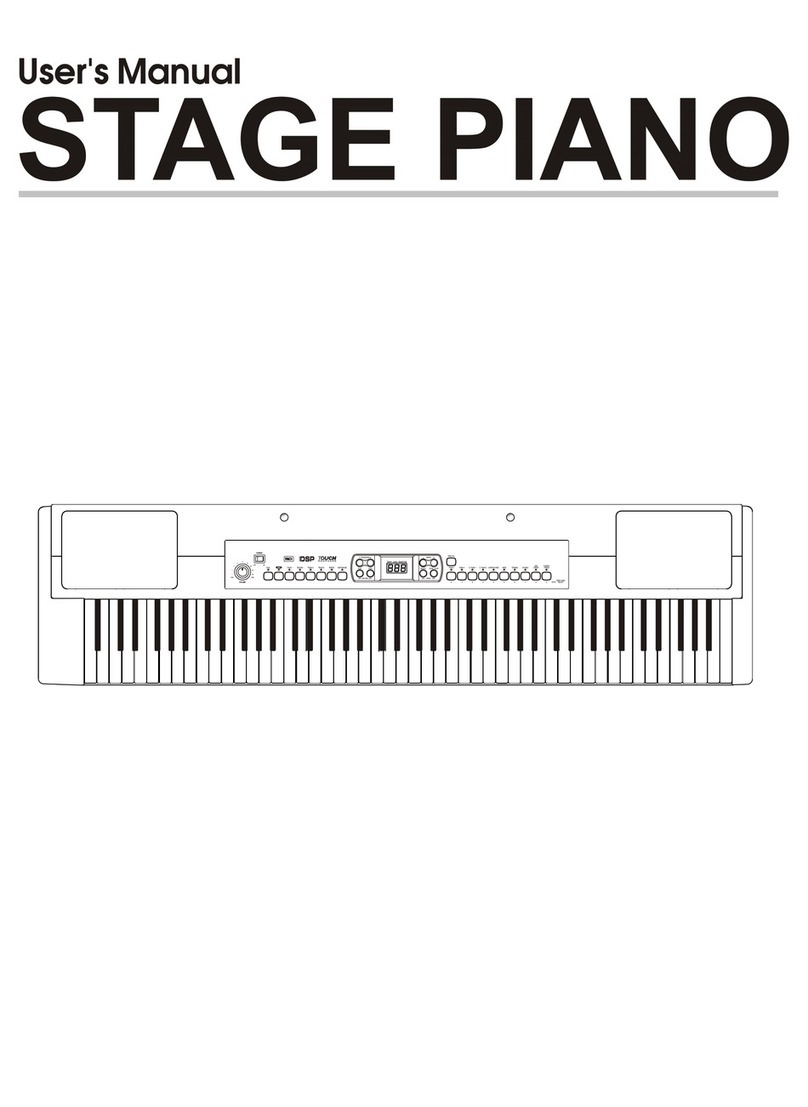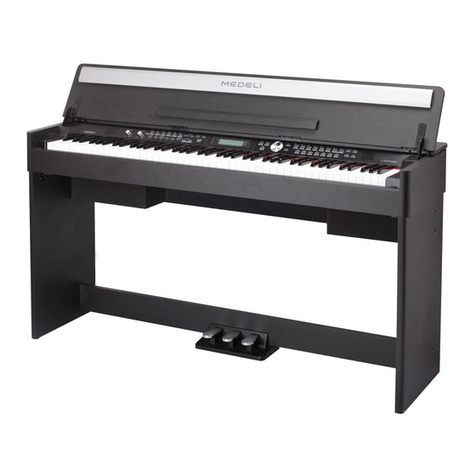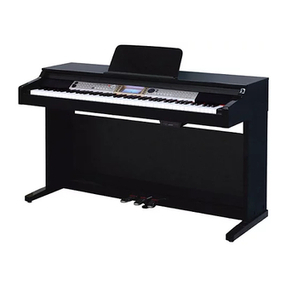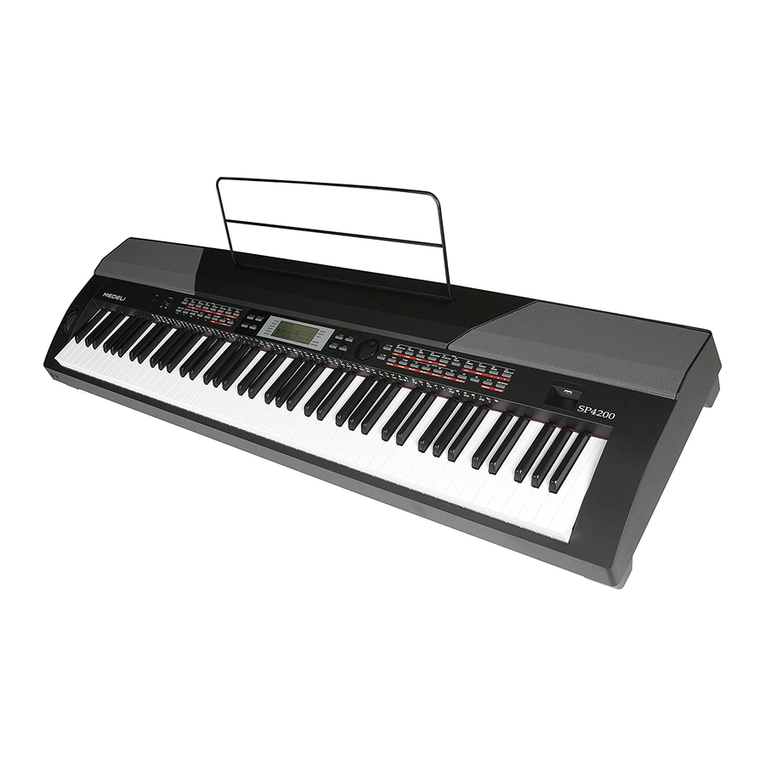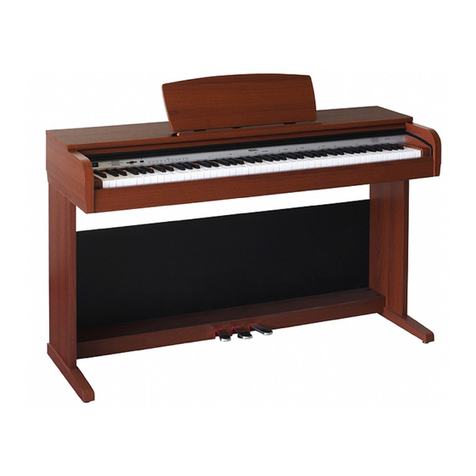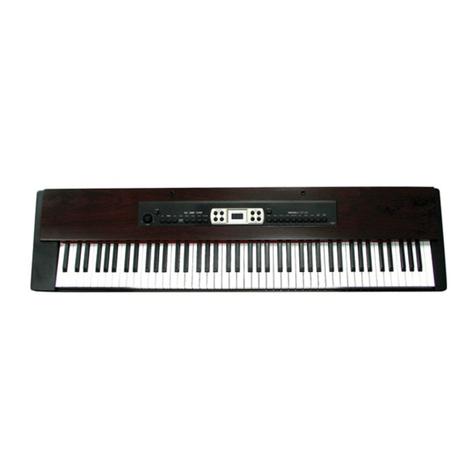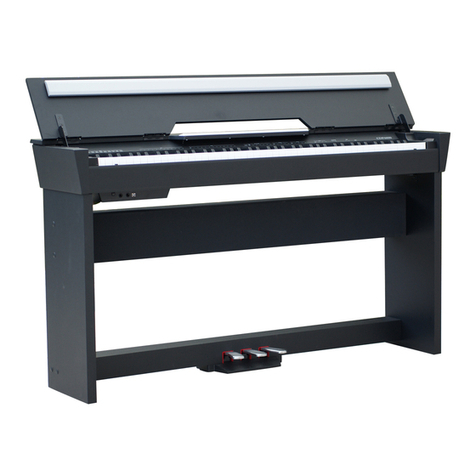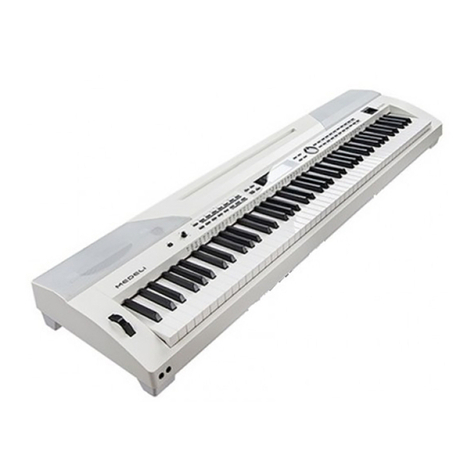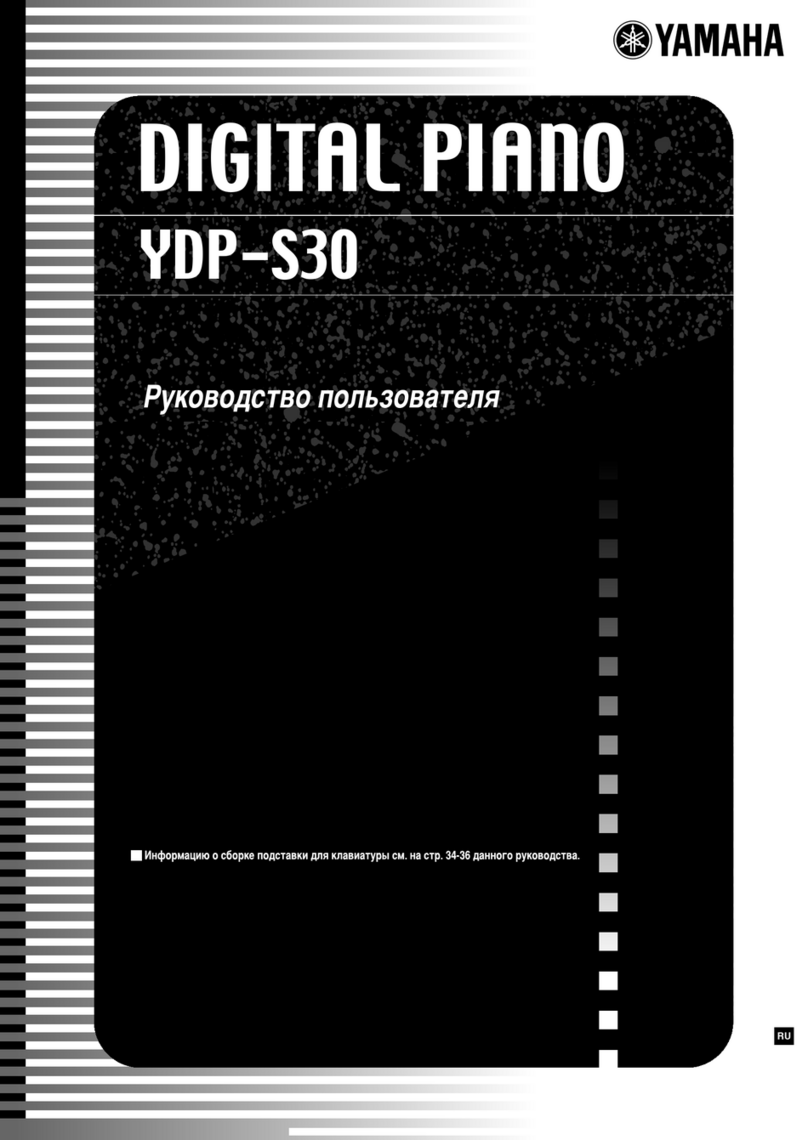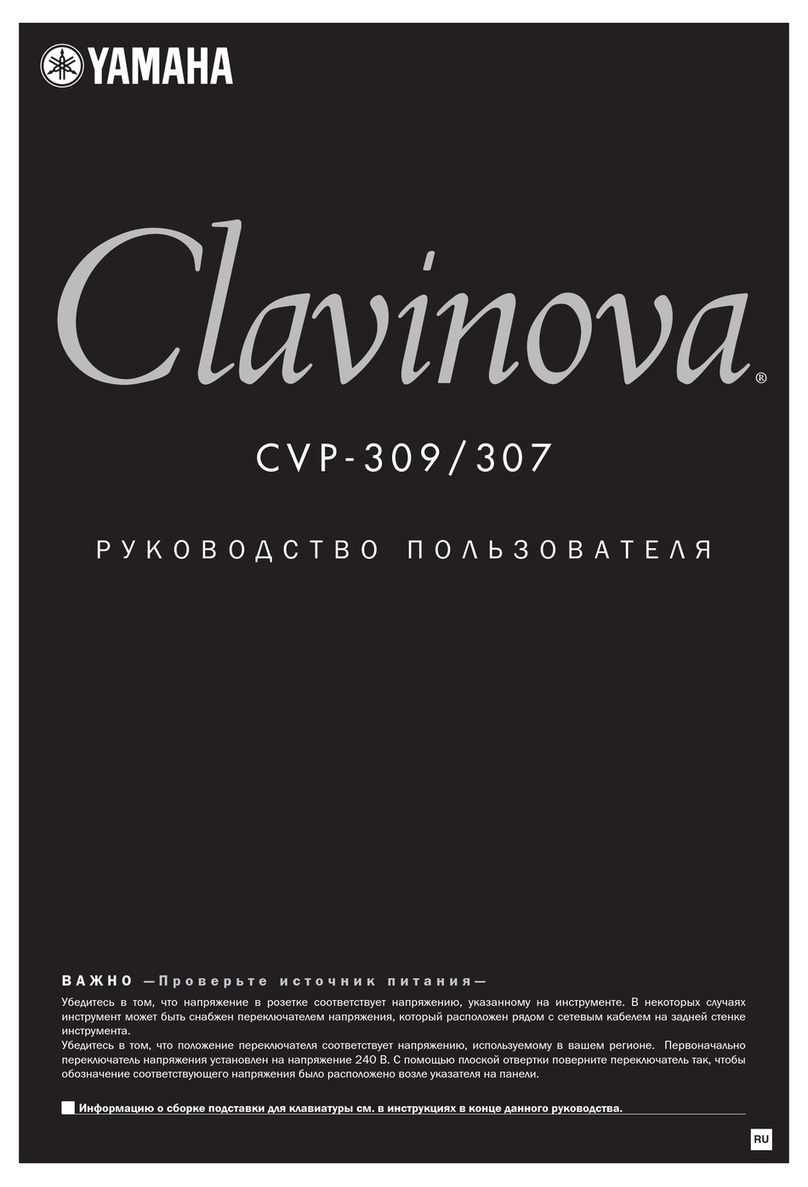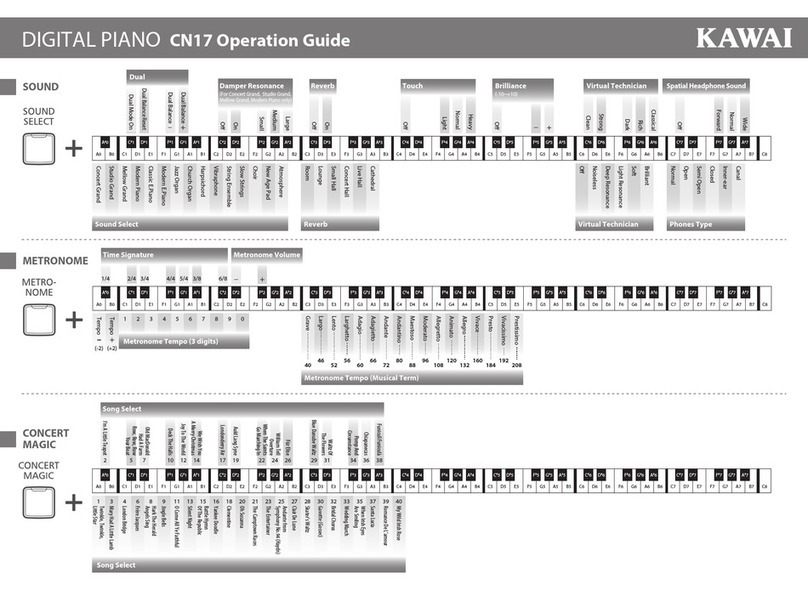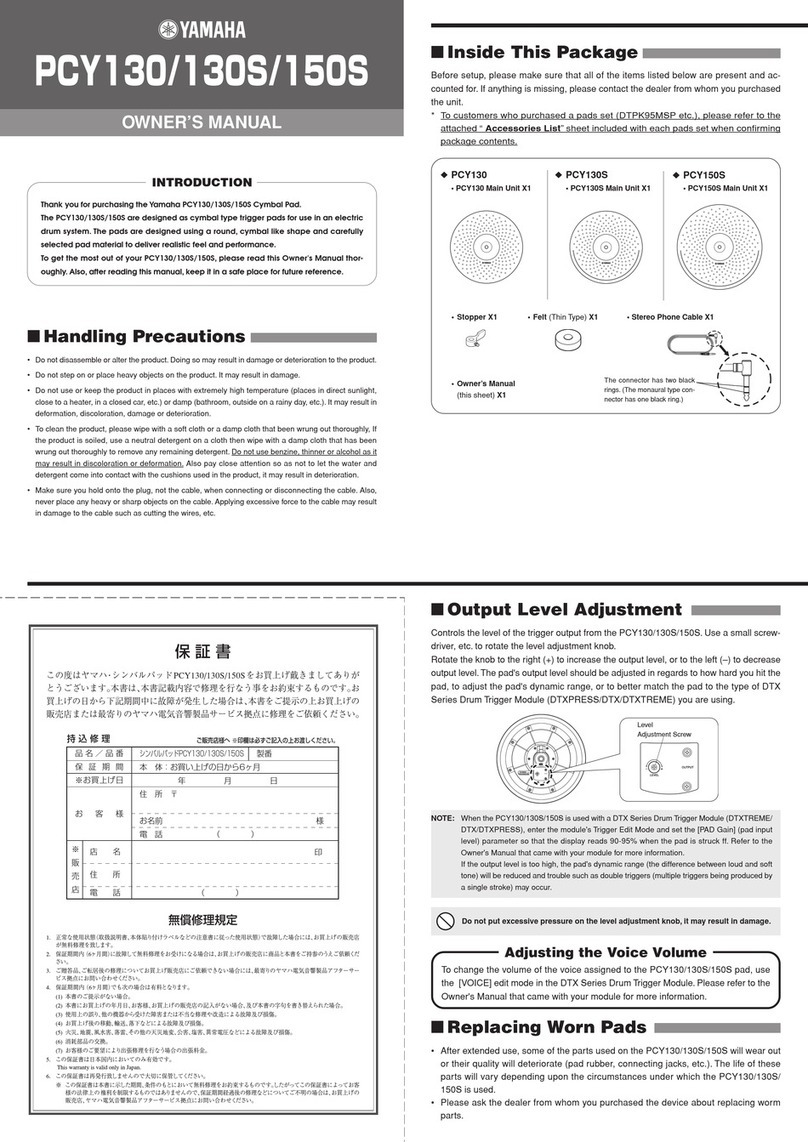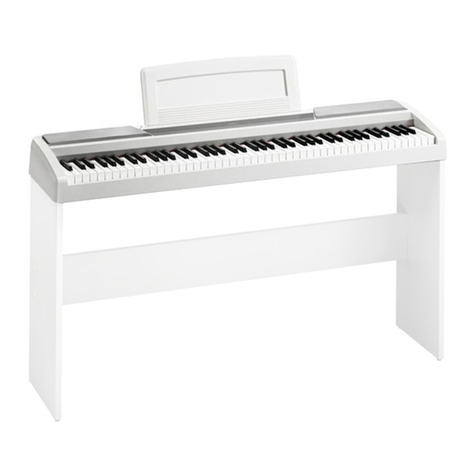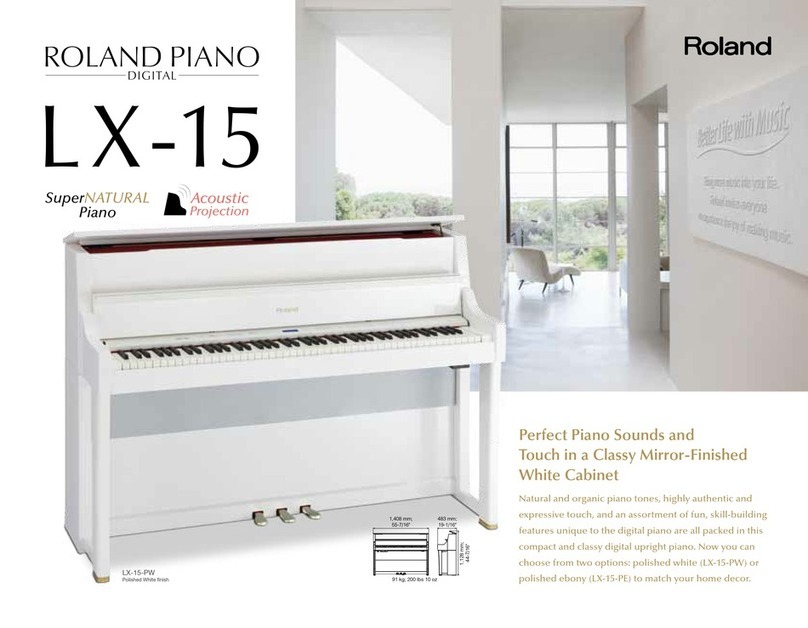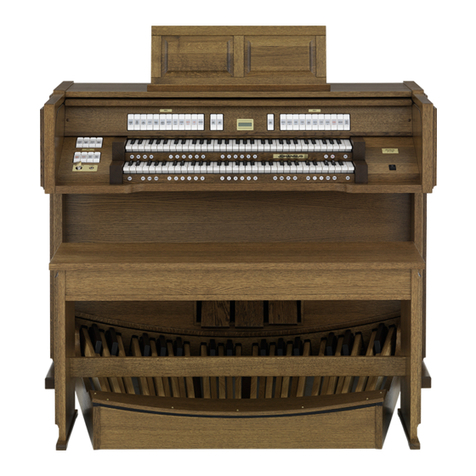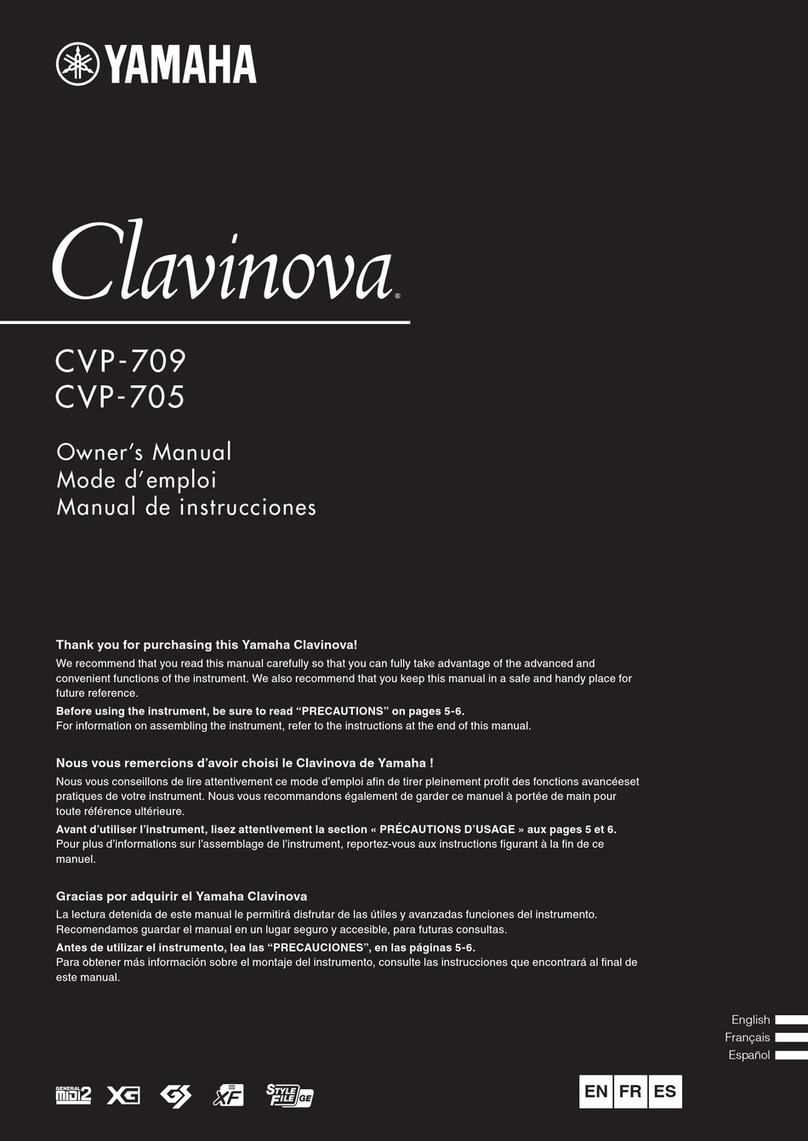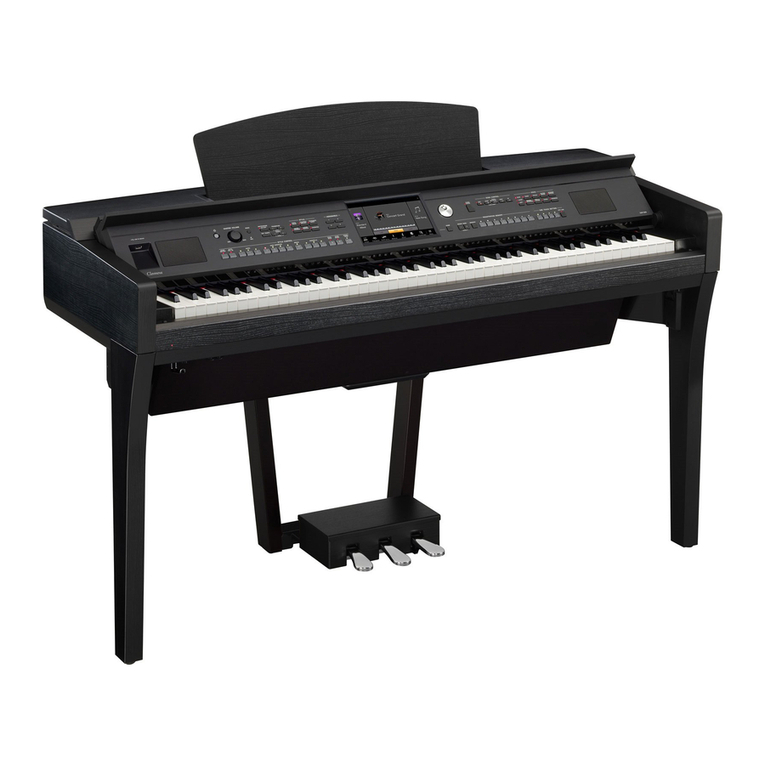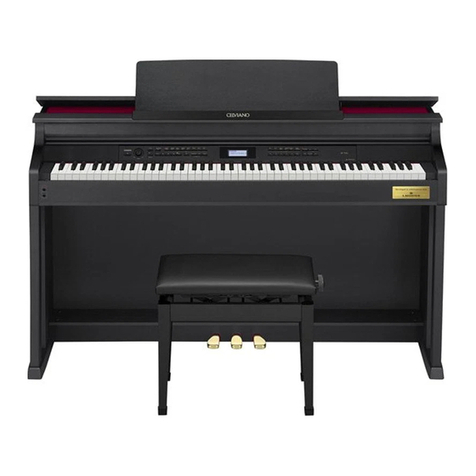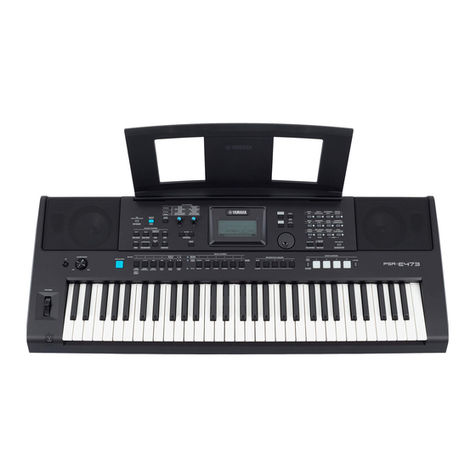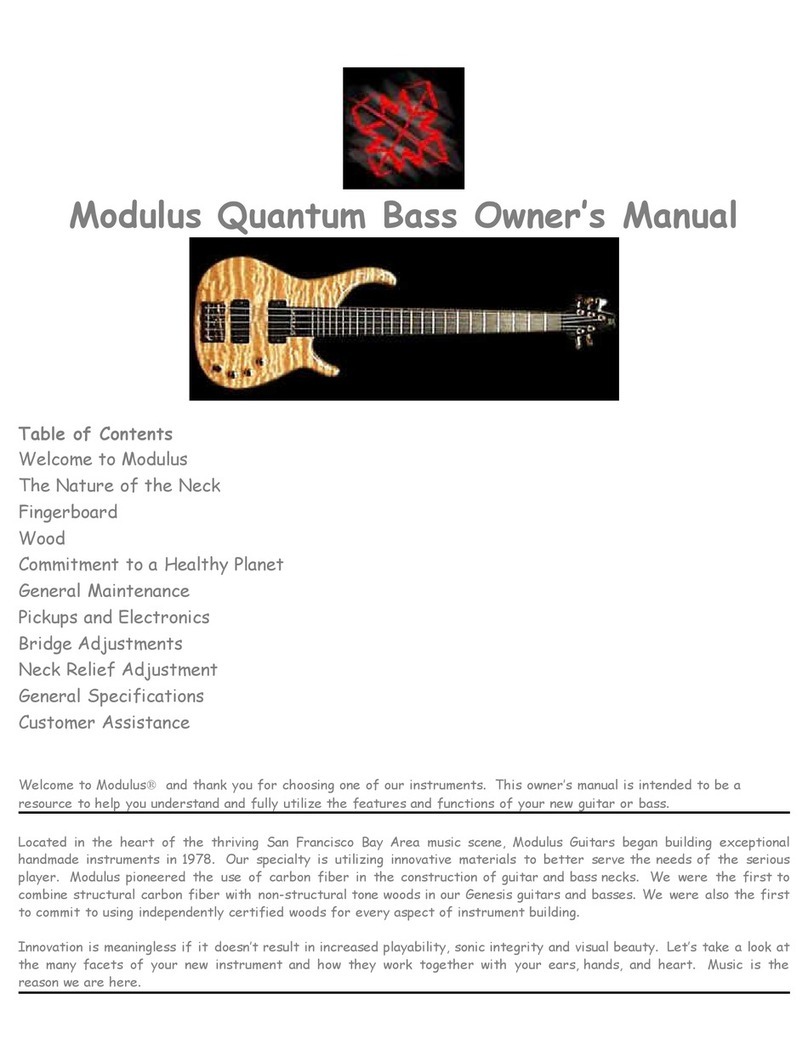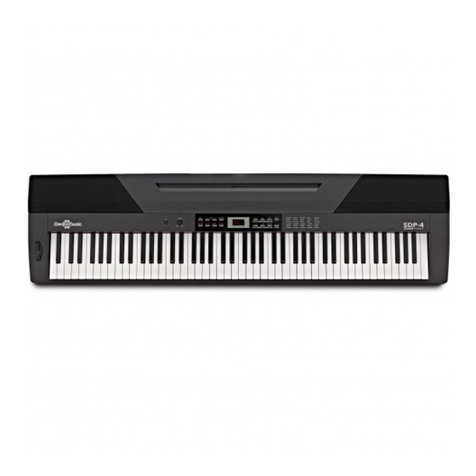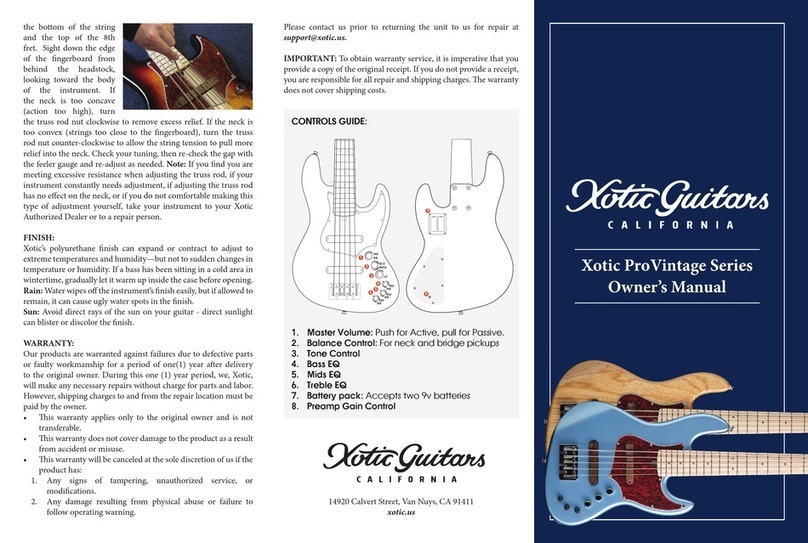
VOLUME
FUNCTION
POWER Button
Control Panel
Keyboard Command
VOLUME Knob
FUNCTION Button
Press three number keys total to enter a
tempo value, for example, pressing 0, 3,
0 to enter the tempo value 30.
* Hold the FUNCTION
button and press the
corresponding key(s)
to use the keyboard
command. When power is turned off, hold the key
A0, then turn on the power to disable
the Auto Power Off function
Hold FUNCTION and G#2, then press a key on the
keyboard to assign as the split point.
* The split point belongs to the left-hand section.
Selecting Sound Twinova Touch Metronome Beat Tempo Reverb Type
Grand Piano
Ele. Piano
Ele. Piano 2
Clavinet
Marimba
Percussive Organ
Church Organ
Reed Organ
Accordion
Acoustic Guitar (Steel)
String Ensembles
Synth Strings 2
Layer On/Off
Split On/Off
Octave -
Octave +
Touch On/Off
Transpose+
Metronome On/Off
Tempo-
Reverb On/Off
D.A.S. On/Off
Demo
Sound Demo
Beep Note On/Off
Split Point
Twinova On/Off
Transpose-
Tap
Tempo+
Selecting Song
C1 C2 C3 C4 C5 C6 C7 C8
POWER Button
VOLUME Knob
FUNCTION Button
Press to turn the power on or off.
Rotate the knob clockwise or counter-clockwise to increase or decrease the volume level.
Hold this button, then press the corresponding key(s) to use the keyboard command.
Selecting sound
Layer mode
Split mode
Split point
Twinova function
Twinova octave
Touch response
Touch response
level
A0 ~ E2
F2
G2
G#2 + a key
Bb2
A2 or B2
C3
C#3 ~ F3
Select a sound as the upper sound.
Turn the Layer mode on or off. You can layer two sounds. When in Layer mode, use the keyboard command to
select a layer sound.
Turn the Split mode on or off. The keyboard is divided into left and right sections. When in Split mode, use the
keyboard command to select a lower sound.
Hold FUNCTION and G#2, then press a key on the keyboard to assign the split point for Split mode.
Turn Twinova function on or off. In Twinova mode, the keyboard is split into two sections with the same sound
and octave range.
Adjust the octave of both the left and right sections in Twinova mode.
Hold FUNCTION, then press A2 and B2 at the same time to reset to the default octave setting.
Turn touch response on or off. It is turned on by default.
Select a touch response level. The numbers 1 ~ 5 correspond to these response settings: Soft 1, Soft 2,
Medium, Hard 1, and Hard 2.
Transpose
Selecting song
Metronome
Metronome accent
Tap
Adjusting the tempo
Entering tempo value
Reverb
Reverb type
D.A.S.
Demo
Sound demo
Beep note
Auto power off
F#3 or G3
C4 ~ A4
C5
C#5 ~ F#5
Ab5
A5 or Bb5
B5 ~ Ab6
C7
C#7 ~ E7
G7
A7
B7
C8
A0 + POWER
Shift the pitch of the entire keyboard up or down by a maximum of one octave in semitone steps.
Hold FUNCTION, then press F#3 and G3 at the same time to reset to the default transpose setting.
Start/stop playing song no. 1 ~ 10.
Turn the metronome on or off.
Set the metronome accent. For example, when selecting 0, no accent will play. When selecting 2, you will get an accent every two beats.
Tap this key at an even speed to set the tempo.
Increase or decrease the tempo value by the step of 1.
Hold FUNCTION, then press A5 and Bb5 at the same time to reset to the default tempo.
Press three number keys total to enter a tempo value.
The range is 30~280. When entering a number lower than 30 or above 280, the instrument will set the tempo to 30 or 280.
Turn reverb on or off. It is turned on by default.
Select a reverb type. The numbers 1 ~ 4 correspond to these reverb types: Room, Hall 1, Hall 2, and Church.
Turn the D.A.S. on or off. It is turned on by default.
The D.A.S. dynamically adjusts the sound of the instrument according to the overall volume for better sound balance.
Start/stop playing the demo.
Start/stop playing the sound demo of the current upper sound.
Turn the beep on or off. It is turned on by default. It will produce a beep sound when using keyboard command to change the settings.
The instrument will turn off after 30 min when it is not used.
To disable this function: when power is turned off, hold A0, then press the POWER switch to turn on the power again.
1
2 4 5 21 3 5 6 8 10 4 2 45 0 1 3 5 6 8
3 0 32 4 7 9 1 36 2 4 7 9
C D E F G
C# D# F# G# Bb
BA
*Key Names
THE FCC REGULATION WARNING (for the USA)
NOTE: This equipment has been tested and found to comply with the
limits for a Class B digital device, pursuant to Part 15 of the FCC
Rules. These limits are designed to provide reasonable protection
against harmful interference in a residential installation. This equipment
generates, uses, and can radiate radio frequency energy and, if not
installed and used in accordance with the instructions, may cause
harmful interference to radio communications. However, there is no
guarantee that interference will not occur in a particular installation. If
this equipment does cause harmful interference to radio or television
reception, which can be determined by turning the equipment off and
on, the user is encouraged to try to correct the interference by one or
more of the following measures:
Reorient or relocate the receiving antenna.
Increase the separation between the equipment and receiver.
Connect the equipment into an outlet on a circuit different from that
to which the receiver is connected.
Consult the dealer or an experienced radio/TV technician for help.
If items such as cables are included with this equipment, you must use
those included items.
Unauthorized changes or modification to this system can void the
user’s authority to operate this equipment.
CAUTION
The normal function of the product may be disturbed by Strong Electro
Magnetic Interference. If so, simply reset the product to resume normal
operation by following the owner’s manual. In case the function could
not resume, please use the product in other location.
Keep this manual
After reading this manual, please keep it for later reference.
PRECAUTIONS
Location
Using the unit in the following locations can result in a malfunction.
In direct sunlight
Locations of extreme temperature or humidity
Excessively dusty or dirty locations
Locations of excessive vibration
Close to magnetic fields
Power Supply
Please connect the designated AC adapter to an AC outlet of the
correct voltage.
Do not connect it to an AC outlet of voltage other than that for which
your unit is intended.
Interference with other electrical devices
Radios and televisions placed nearby may experience reception
interference.
Operate this unit at a suitable distance from radios and televisions.
Troubleshooting
The speakers produce a pop sound whenever the power is turned
On/Off.
This is normal and is no cause for alarm.
Speakers do not produce sound when the keyboard is played.
Check if the volume is set too low.
Check if headphones are plugged into PHONE Jack 2.
When connecting to computer, the instrument cannot be recognized.
Check if the USB cable is firmly connected. Try connecting another USB
port on the computer. This instrument is plug and play which should work
without installing a driver.
Care
If the exterior becomes dirty, wipe it with a clean, dry cloth. Do not use
liquid cleaners, such as benzene or thinner, or cleaning compounds or
flammable polishes.
Handling
To avoid breakage, do not apply excessive force to the switches or
controls.
Keeping foreign matter out of your equipment
Never set any container with liquid in it near this equipment. If liquid
gets into the equipment, it could cause a breakdown, fire, or electrical
shock. Be careful not to let metal objects get into the equipment.
Keyboard:
Touch Response:
Polyphony:
Sound:
Layer:
Sound Function:
Transpose:
Twinova:
Tempo:
Metronome:
Effect:
Sound Demo:
Song:
Demo:
Other Functions:
Connectivity:
Pedal:
Power:
Amplifier:
Speaker:
Dimension (WDH):
Weight:
88 Weighted, Graded Hammer Action
5 Types, Off
64 Notes (max.)
20
Left, Right 1, Right 2
Layer, Split, Split Point
Yes, -12 ~ +12
Yes, -1 ~ +1 Octave Shift
30 ~ 280, Tap Tempo
Yes, 2 ~ 6 Types
4 Reverb Types, D.A.S.
20
10
1
Beep Note, Auto Power Off
2 Headphones, USB (USB-Audio & MIDI),
Aux In, Line Out
Sustain, Sostenuto, Soft
DC 12V
25 watt x 2
(15 x 10) cm x 2 oval
1362 × 396 × 830 mm
39.7 kg
Specifications
*All specifications are subject to change without notice.
Function IllustrationFunction Description
Grand Piano 2
Harpsichord
Vibraphone
Drawbar Organ
Church Organ 2
Rock Organ
Acoustic Guitar (Nylon)
Synth Strings
